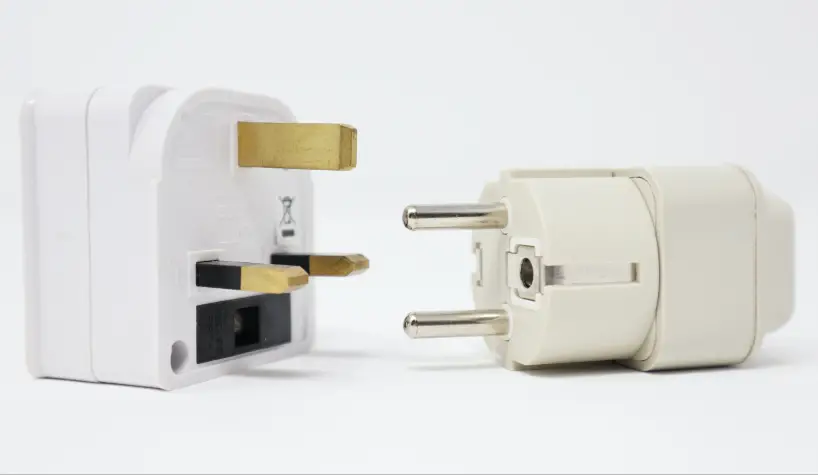The standard voltage in the USA is 120 volts AC (alternating current), with a frequency of 60 Hz (hertz). However, some appliances and devices may require a different voltage, such as 240 volts AC. In those cases, a specific circuit or outlet will be needed to supply the appropriate voltage.
Overview of Standard Voltage in the USA
The standard voltage in the USA is 120 volts AC (alternating current), with a frequency of 60 Hz (hertz). This voltage is used to power most household appliances and devices, such as lamps, televisions, and computers.
The electrical power grid in the USA is divided into three main regions: the Eastern Interconnection, the Western Interconnection, and the Texas Interconnection. Each region has its own electrical grid and power distribution network, but the voltage and frequency standards are the same across the country.
Definition and Types of Voltage

Voltage, also known as electric potential difference, is a measure of the force that drives an electric current through a circuit. It is typically measured in volts (V).
There are several types of voltage, including:
- Direct current (DC) voltage: This type of voltage flows in one direction only, from the positive terminal to the negative terminal of a battery or power source.
- Alternating current (AC) voltage: This type of voltage changes direction periodically, typically at a frequency of 50 or 60 hertz (Hz).
- Peak voltage: This is the maximum voltage that a circuit or device can handle.
- RMS voltage: This is the root-mean-square voltage, which is used to calculate the effective voltage of an AC waveform.
- Pulsed voltage: This type of voltage is characterized by short bursts of high voltage, followed by periods of low voltage.
- Surge voltage: This is a sudden, brief increase in voltage that can occur in a circuit or device, often due to lightning strikes or power surges.
- Transient voltage: This is a short-duration, high-voltage signal that can occur in a circuit or device, often due to switching operations or other electrical disturbances.
Overview of Electrical Systems in the USA
The electrical system in the USA is a complex network of power plants, transmission lines, substations, and distribution networks that work together to deliver electricity to homes, businesses, and other users.
The majority of electricity in the USA is generated by power plants that use fossil fuels, such as coal, natural gas, and oil. However, there is also a growing use of renewable energy sources, such as wind and solar power.
Once electricity is generated, it is transmitted over high-voltage transmission lines to substations, where the voltage is reduced and distributed over lower-voltage distribution lines to homes, businesses, and other users.
In the USA, the standard voltage for household electrical systems is 120 volts AC, with a frequency of 60 Hz. However, some appliances and devices may require a different voltage, such as 240 volts AC, and will require a specific circuit or outlet to supply the appropriate voltage.
Understanding Electrical Devices and Voltage Conversion
Electrical devices are designed to operate within a specific voltage range. If the voltage supplied to a device is too high or too low, it can damage the device or cause it to malfunction.
In some cases, it may be necessary to convert the voltage supplied to a device in order to use it in a different location or with a different power source. For example, if you have an electrical device designed for 240 volts AC and you want to use it in the USA, where the standard voltage is 120 volts AC, you will need to convert the voltage.
There are several ways to convert voltage, including:
- Using a voltage converter or transformer: This is a device that converts the voltage from one level to another. For example, you can use a step-down transformer to convert 240 volts AC to 120 volts AC.
- Using a voltage adapter or converter plug: This is a device that allows you to plug a device designed for a different voltage into a different outlet. For example, you can use a plug adapter to plug a device designed for 240 volts AC into an outlet designed for 120 volts AC.
It’s important to note that not all electrical devices can be converted or used with different voltages. Always check the manufacturer’s specifications for your device before attempting to use it with a different voltage or power source.
In addition, it’s important to use high-quality voltage converters, transformers, adapters, and plugs to ensure that they are safe and reliable. Poor-quality or improperly used voltage converters can cause electrical shocks, fires, or damage to your devices.
Factors That Affect Voltage
Here are some factors that can affect voltage:
- Resistance: The amount of resistance in a circuit can affect the voltage. The higher the resistance, the lower the voltage, and vice versa.
- Current: The amount of current flowing through a circuit can also affect the voltage. In some cases, an increase in current can lead to a decrease in voltage due to resistance or other factors.
- Temperature: Changes in temperature can affect the resistance of materials used in a circuit, which can in turn affect the voltage.
- Load: The load on a circuit, or the amount of power being consumed by devices connected to the circuit, can affect the voltage. As the load increases, the voltage may decrease due to the higher current demand.
- Distance: The distance between a power source and a device can affect the voltage. The longer the distance, the greater the voltage drop due to resistance in the wires or cables.
- Type of circuit: Different types of circuits, such as AC or DC circuits, can have different voltage characteristics.
- Environmental factors: Environmental factors such as humidity, dust, and moisture can affect the performance of electrical systems and devices, which can in turn affect the voltage.
Voltage Regulation in the USA

In the USA, voltage regulation is primarily the responsibility of the individual utilities and their regulatory agencies. Utilities are required to maintain voltage levels within certain limits to ensure that customers receive reliable and safe electricity.
The voltage levels in the USA are regulated by a number of organizations, including the Federal Energy Regulatory Commission (FERC), the North American Electric Reliability Corporation (NERC), and state-level public utilities commissions.
Utilities use a combination of equipment and technologies to regulate voltage levels, including voltage regulators, capacitors, and transformers. These devices are used to adjust the voltage on the transmission and distribution systems to maintain a consistent level of voltage at the customer’s premises.
Conclusion
In conclusion, understanding voltage is crucial in designing, operating, and maintaining electrical systems and devices. The standard voltage in the USA is 120 volts AC, but different types of electrical systems and devices may require different voltages. Factors that can affect voltage include resistance, current, temperature, load, distance, type of circuit, and environmental factors.
References:
https://www.electricaltechnology.org/2023/03/standard-voltage-levels-in-us.html

